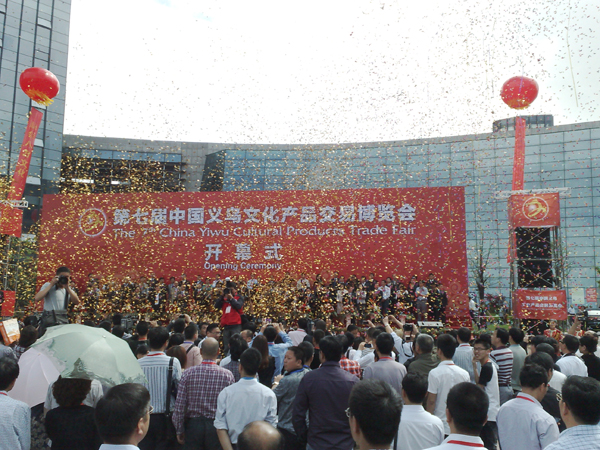Cultural products are a category hard to define. In short, they are comprised of so-called "hardware" – tangible things that contain intangible culture. The picture frame that holds a classic painting, the inkstand that may give help to a budding brush calligrapher, or even the printing machine that embosses a hard cover…
In the mammoth exhibition hall in Yiwu, the definition of a cultural product is so broad that it becomes all-inclusive. The 3,485 booths, covering 68,000 square meters, may look - in small sections - like a home study, a design room, a home decor shop, an office supply store, or even a printing factory.
The 7th China Yiwu Cultural Products Trade Fair, held from April 29 to May 2, attracted a total of 92,395 exhibitors, including 5,782 from abroad who belonged to 36 trade delegations. Collectively, they signed deals worth 4.517 billion yuan, including 2.755 billion yuan in foreign trade. This represents a year-on-year increase of 11.2 percent and 10.69 percent respectively.
|
 The 7th China Yiwu Cultural Products Trade Fair opened April 29. [Photo taken by Raymond Zhou/chinadaily.com.cn]
|
According to Ge Guoqing, deputy secretary of CPC Yiwu, the city hosted a total of 143 trade exhibitions in 2011, racking up deals to the amount of 32.72 billion yuan. The cultural products fair is designed to "boost cultural significance and expand the culture industry" by building up the trade platform, she said.
During the trade show, Zhejiang, Jiangsu, Shandong, Anhui, Fujian, Jiangxi and Shanghai formed an alliance that aimed to explore the possibilities in culture-related businesses using the resources and consumer power of the relatively affluent East China coastal area.
Also taking advantage of the platform were enterprises involved in frames, Christmas products, cross stitch, forums and issuing industry standards. Their size was felt in the exhibition hall as they congregated in the show space.
For example, Jindezhen porcelain occupied 420 booths, displaying tens of thousands of exhibits that ranged from traditional to high-concept.
One hall was devoted to intangible cultural heritages, which encompassed such crafts as jade carving, paper-cutting, and wine brewing. About 400 gems from 20 provinces were showcased. Schools of higher education that teach art and craft and animation businesses also participated.
Tea was another highlight, with Zhejiang green tea attracting the most attention.
The fair did not neglect new trends. There was plenty of space demonstrating animation and modern gadgets.
A photo exhibition devoted to Chinese diplomats who captured exotic moments in their land of assignment added some international flavor to the event.
A display of local talent was visible in the 105-meter-long scroll of photography-painting hybrid that depicts the commercial bustle of Yiwu. It is 20 times the length of the famous Qingming on the Lake, which presents the Song Dynasty capital city in vivid vitality.
